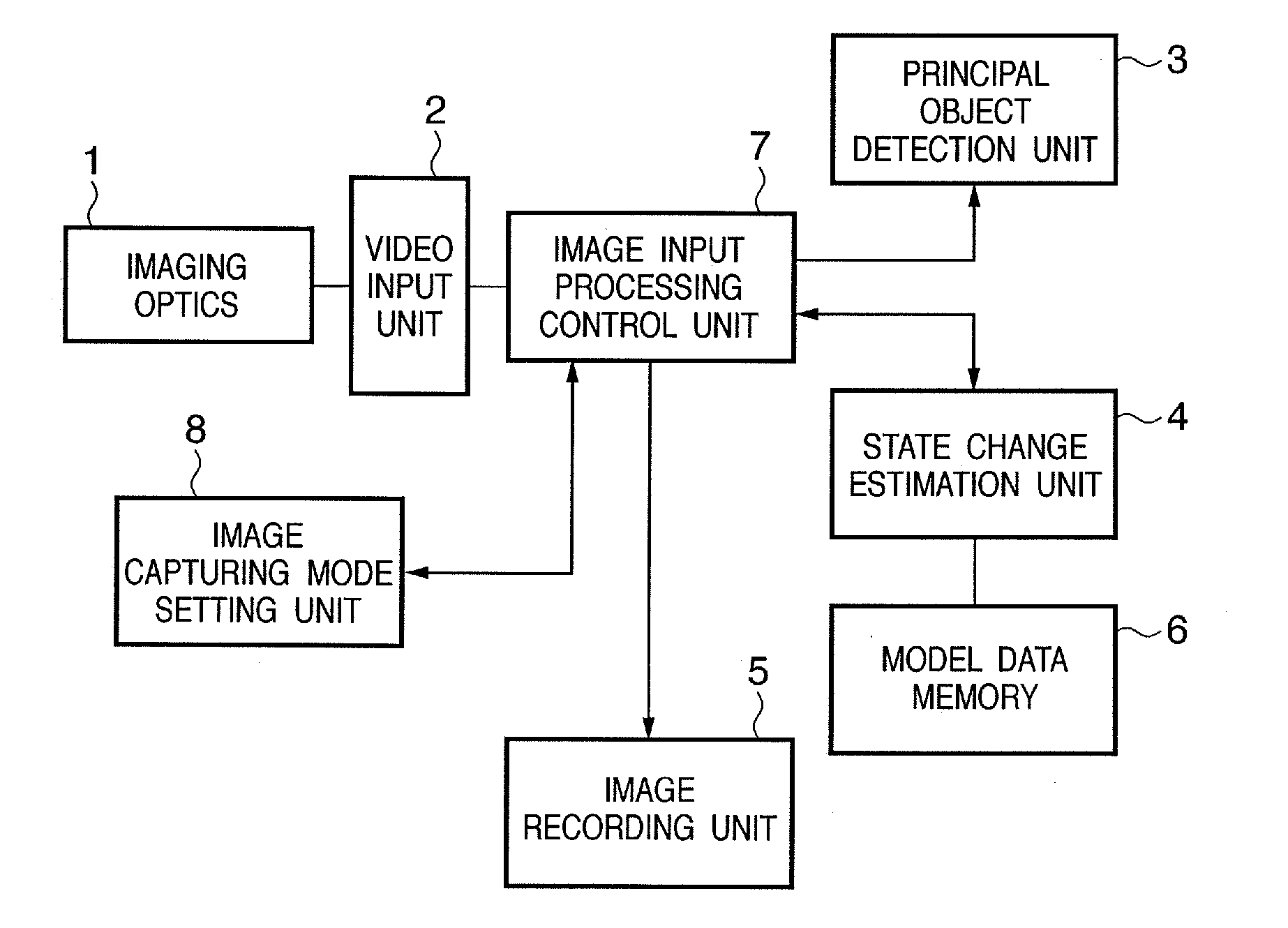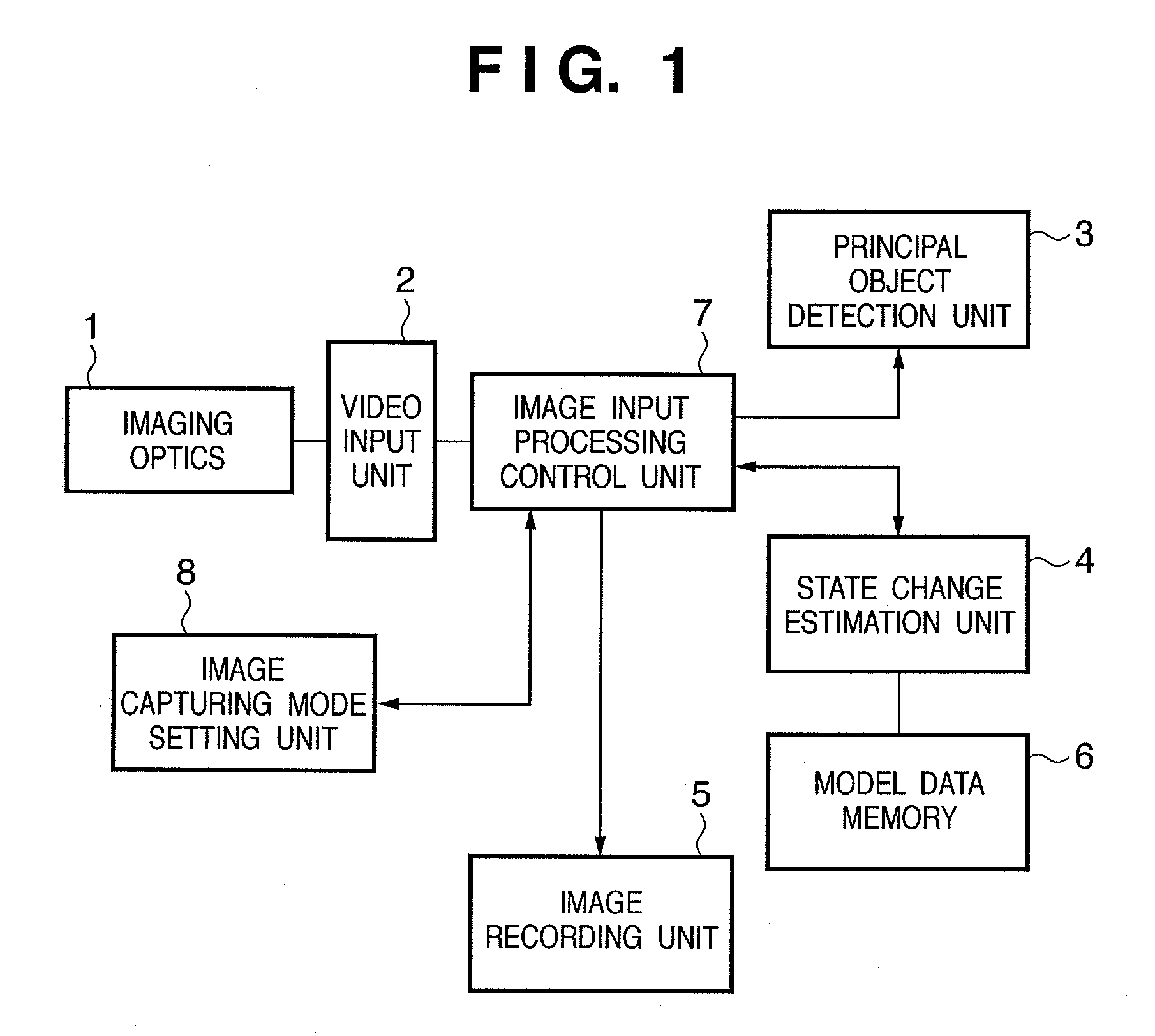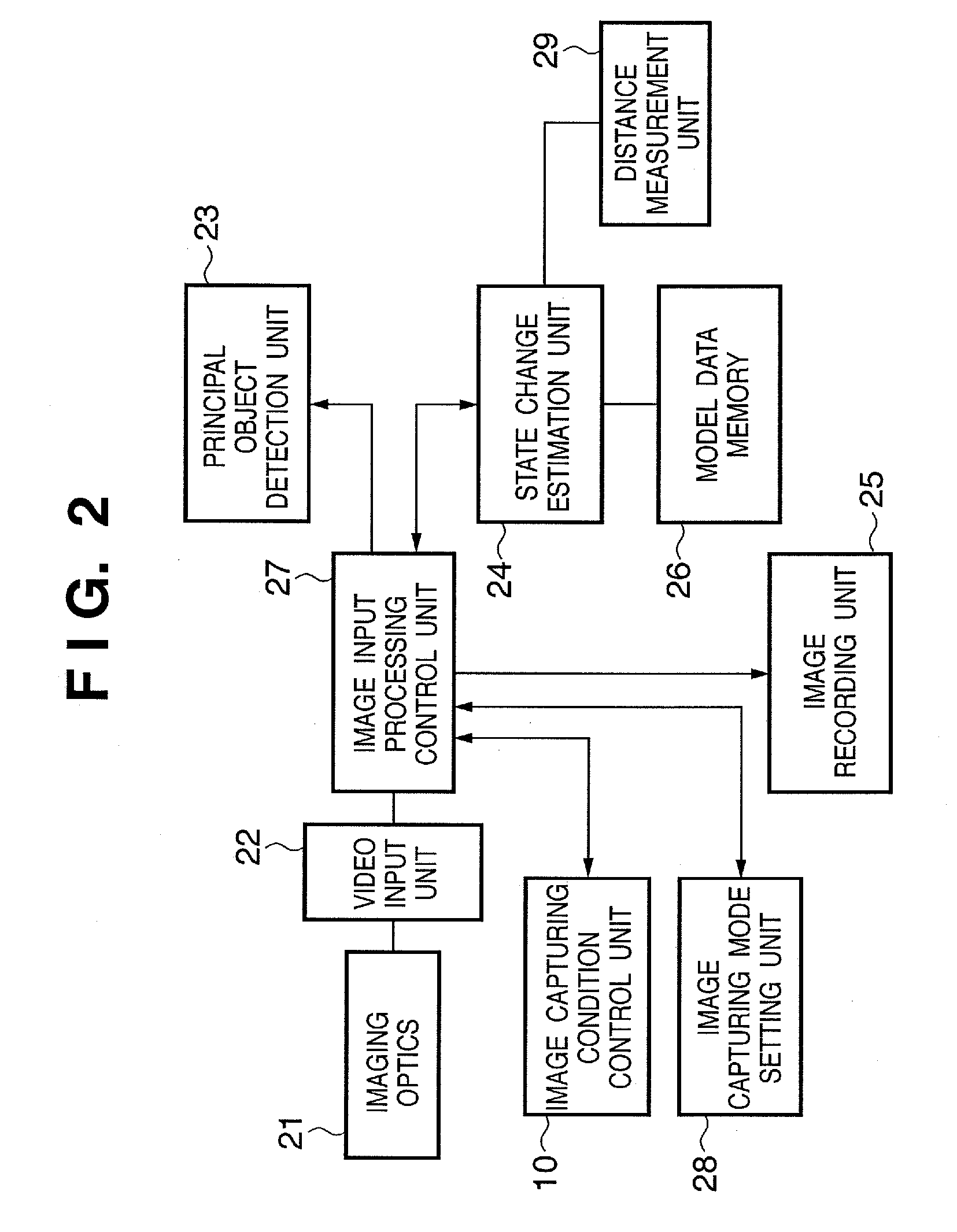Image capturing apparatus and image capturing method
a technology image, which is applied in the field of image capturing apparatus, can solve the problems of difficult to satisfactorily track the state of high-level changes of objects, and the inability to provide images at the desired timing,
- Summary
- Abstract
- Description
- Claims
- Application Information
AI Technical Summary
Benefits of technology
Problems solved by technology
Method used
Image
Examples
first embodiment
[0056] As shown in FIG. 1, the image capturing apparatus comprises an imaging optics 1, video input unit 2, principal object detection unit 3, state change estimation unit 4, model data memory 6, image input processing control unit 7, image capturing mode setting unit 8, image recording unit 5, and the like. An outline of the function of each building unit is as follows.
[0057] The imaging optics 1 comprises of a lens and the like, and forms an image on the basis of light traveling from an object.
[0058] The video input unit 2 photoelectrically converts an image formed by the imaging optics 1, and outputs the image as image data. The video input unit 2 is made up of a video (optical) sensor such as a CCD (Charge-Coupled Device), a sensor signal processing circuit, a sensor driving circuit, and the like. The video input unit 2 is typically formed using a CMOS image sensor and the like. The video input unit 2 outputs a predetermined video signal (image data) in response to a read cont...
second embodiment
[0130] The image capturing condition control unit 10 controls photographing conditions such as the exposure and focus on the basis of a prediction signal input from the state change estimation unit 24. For example, when an object moves quickly apart from the image capturing apparatus, a general AF (Automatic Focus) device cannot track or control an accurate in-focus state. To solve this problem, the (autonomous) image capturing apparatus incorporates a predetermined distance measurement unit 29 which measures the distance between an object and the image capturing apparatus. The state change estimation unit 24 generates a prediction signal associated with the object distance on the basis of a signal which is output from the distance measurement unit 29 and associated with the distance to the object. In accordance with the prediction signal, the image capturing condition control unit 10 performs positioning control of a focus control lens motor. In this case, the state change estimat...
third embodiment
[0150] In the third embodiment, in addition to the above configuration, image capturing conditions are automatically controlled (changed) on the basis of the result of detecting the motion pattern of a principal object (person) (the contents of the motion pattern).
[0151]FIG. 6 is a block diagram showing the configuration of the main part of an image capturing apparatus according to the third embodiment. As shown in FIG. 6, the image capturing apparatus according to the third embodiment comprises an imaging optics 31, video input unit 32, principal object detection unit 33, state change estimation unit 34, image recording unit 35, model data memory 36, image input processing control unit 37, image capturing mode setting unit 38, and image capturing condition control unit 300. These units are the same as the units 1 to 8 in FIG. 1 and the unit 10 in FIG. 2, and a detailed description thereof will be omitted.
[0152] In addition to the above configuration, the image capturing apparatus ...
PUM
 Login to View More
Login to View More Abstract
Description
Claims
Application Information
 Login to View More
Login to View More - R&D
- Intellectual Property
- Life Sciences
- Materials
- Tech Scout
- Unparalleled Data Quality
- Higher Quality Content
- 60% Fewer Hallucinations
Browse by: Latest US Patents, China's latest patents, Technical Efficacy Thesaurus, Application Domain, Technology Topic, Popular Technical Reports.
© 2025 PatSnap. All rights reserved.Legal|Privacy policy|Modern Slavery Act Transparency Statement|Sitemap|About US| Contact US: help@patsnap.com



